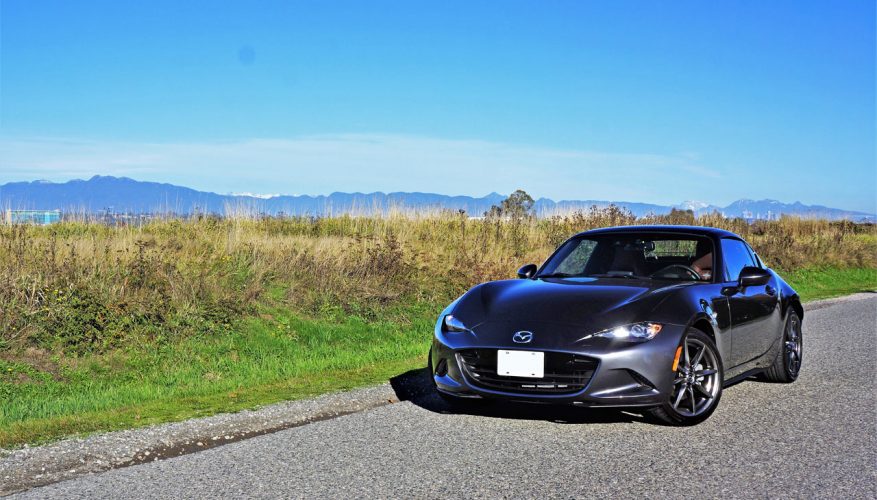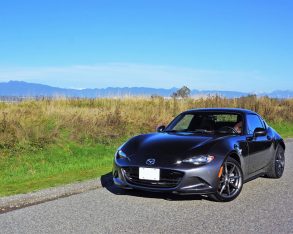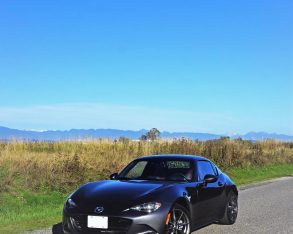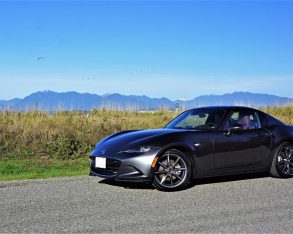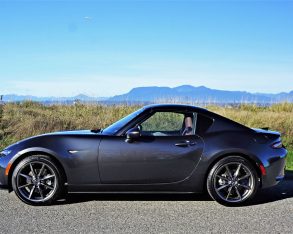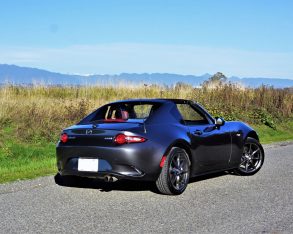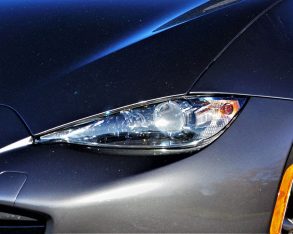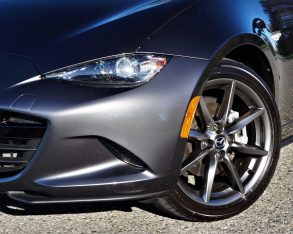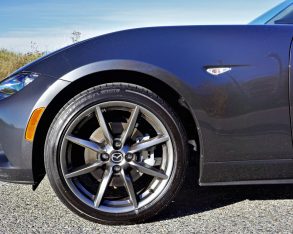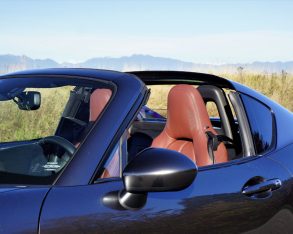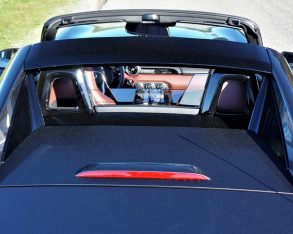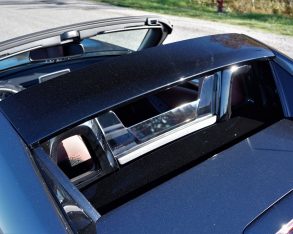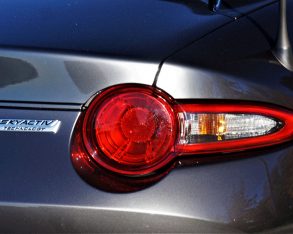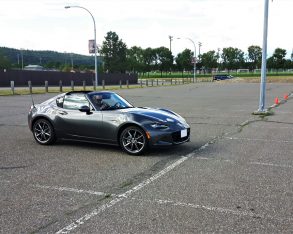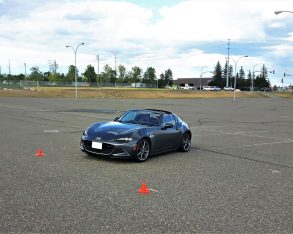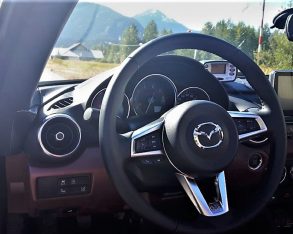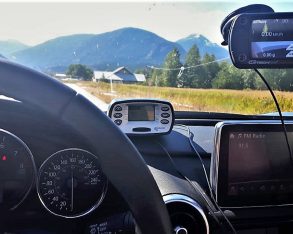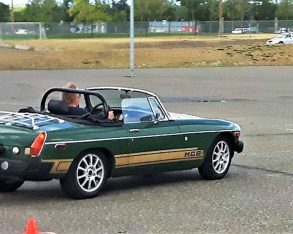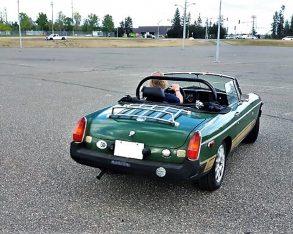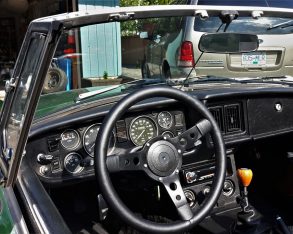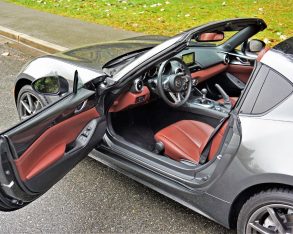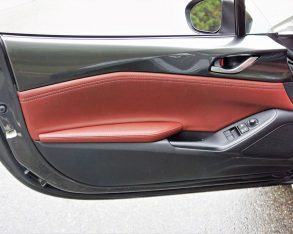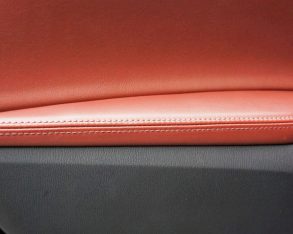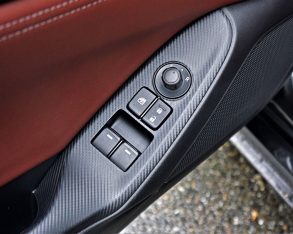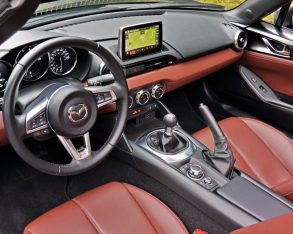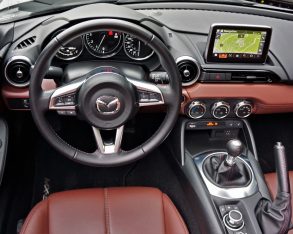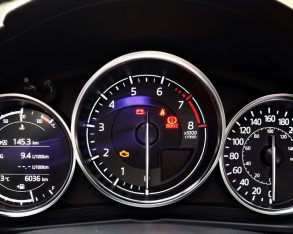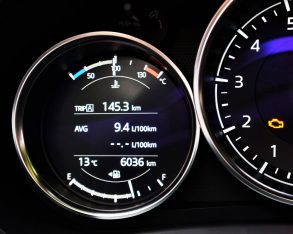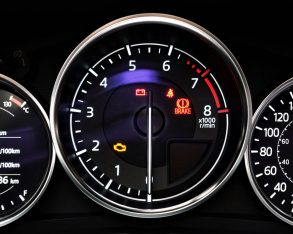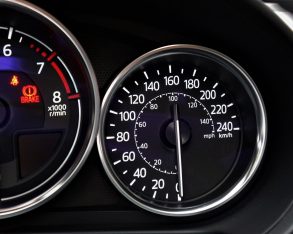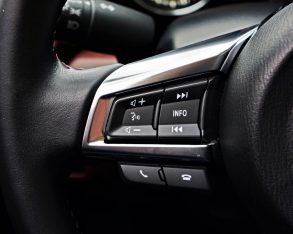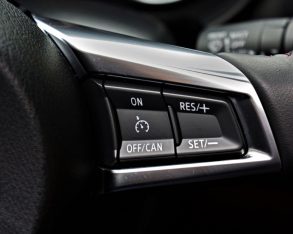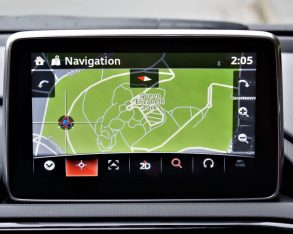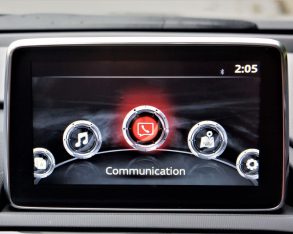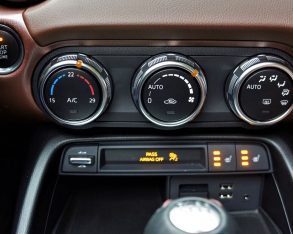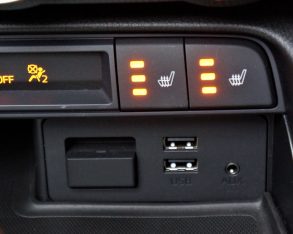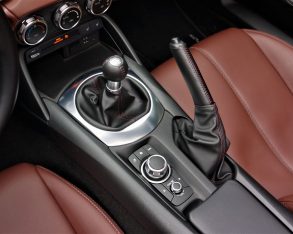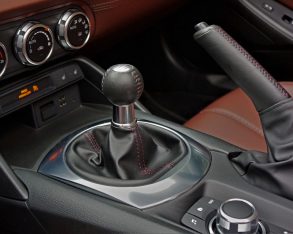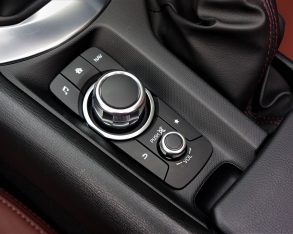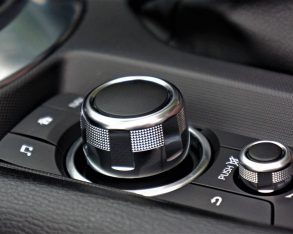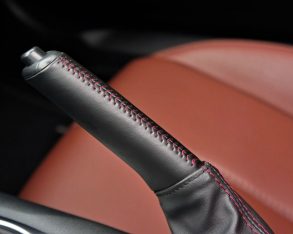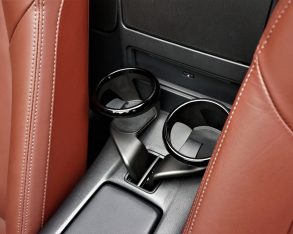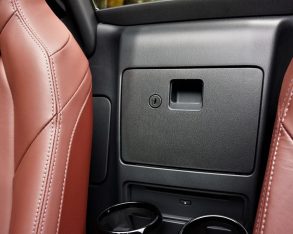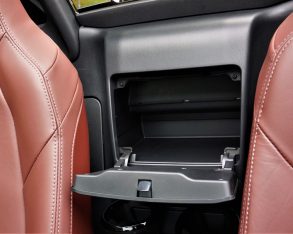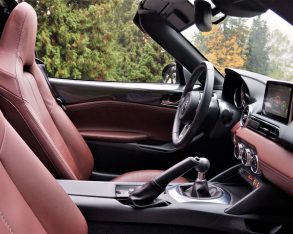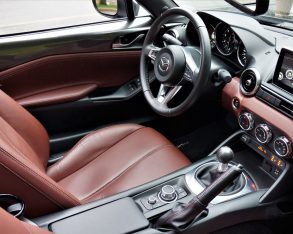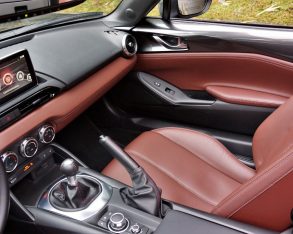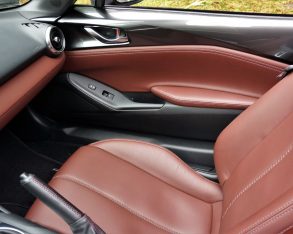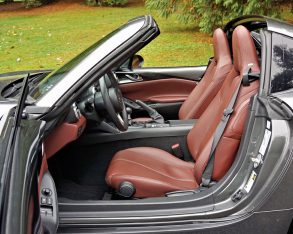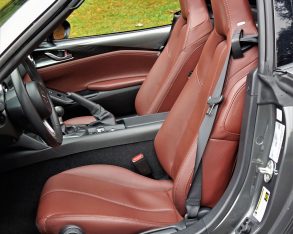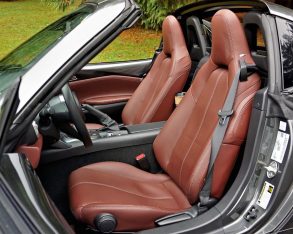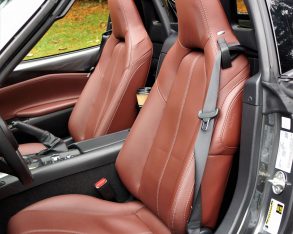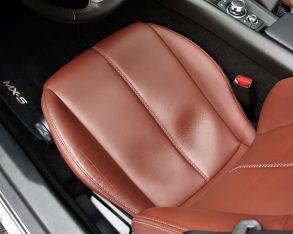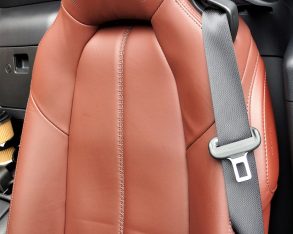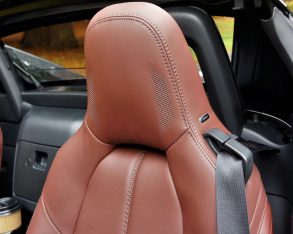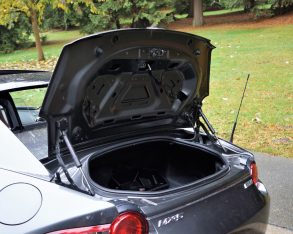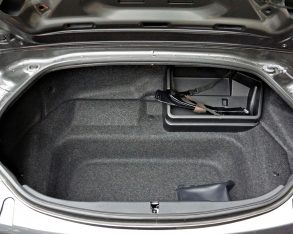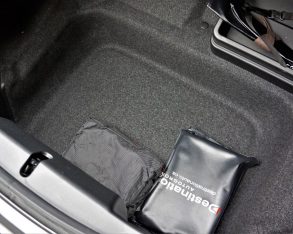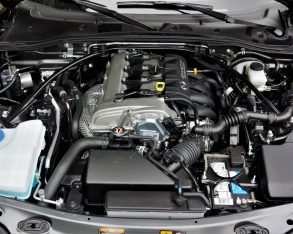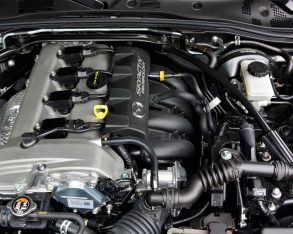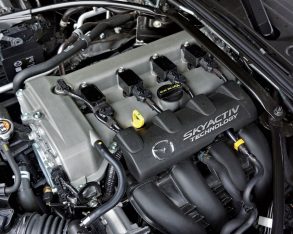 |
| Sharp looking MX-5 is even sweeter with new targa-style retractable fastback. (Photo: Karen Tuggay, Canadian Auto Press) |
My big decision was where to go with the vehicle. Vancouver traffic didn’t seem like a good idea, so, top down I headed towards the twists and turns of the Fraser Canyon. Next to a motorcycle, a convertible provides the most complete driving experience,
 |
| It looks like a sports coupe, but the RF stows its roof and rear window away in just 13 seconds. (Photo: Karen Tuggay, Canadian Auto Press) |
The Mazda’s 155 horsepower and 148 lb-ft of torque don’t sound like much, but the car is decently quick. Downshifting a couple of gears with the six speed manual gearbox helped me get past the semis that use the Fraser Canyon route. The MX-5 is nimble and light, with my RF tipping the scales at 1,114 kg (2,456 lbs), a small increase from the soft-top’s 1,058 kg (2,332 lbs).
Mazda did an extensive weight reduction program with this vehicle when it arrived in 2016. In a way, their efforts mirror the now-successful British Cycling Team’s marginal
 |
| The targa-like cross-member allows air to pass below when the roof is lowered. (Photo: Karen Tuggay, Canadian Auto Press) |
My test car came with two options, Machine Grey Metallic paint for $300 and an Exclusive package costing $900, which included a black contrasting top and Nappa leather seats. In other ways the vehicle was already well equipped, with LED headlamps and taillights, a Bose sound system, an easy to use display panel, and more. Including freight and pre-delivery inspection, my car’s sticker was $45,195. A
 |
| Brilliantly balanced MX-5 is no less agile in RF trim. (Photo: Shane, Canadian Auto Press) |
Not counting the Fiat 124, which is based on the same chassis, the MX-5 has no real competition. The RF is more practical for the climate in most of Canada. I still would not relish putting it through a northern winter, with deep snow and road shrapnel; it’s too nice a car for that sort of abuse. It appears to be very well assembled, and should be reliable. Oddly enough, the car I kept thinking of, as a comparison, was the British MGB.
In
 |
| Excellent for its era, the MGB is no match for its modern-day equivalent, unless we’re talking smiles per hour. (Photo: Shane, Canadian Auto Press) |
Both the MX-5 and MGB are snug-fitting vehicles. My 1977 MGB, which I brought along to the track when testing the MX-5 GT RF, weighs within a few kilos of this new Mazda. MGB production ended in 1980, largely due to lack of development budget.
 |
| GT interior makes for the most refined MX-5 yet. (Photo: Karen Tuggay, Canadian Auto Press) |
The MGB design dates back to 1962, and in its era was considerably more capable than the average family car, as the MX-5 is today. My friend Shane, who helped with filming, didn’t think my MGB felt 40 years old. Part of that is likely due to the modern radial tires. Both cars are great fun to drive, and yes, only one is weatherproof.
At
 |
| Tablet-style infotainment allows tap, pinch and swipe capabilities. (Photo: Karen Tuggay, Canadian Auto Press) |
Concerning
 |
| The GT’s supportive sport seats are quite luxurious too. (Photo: Karen Tuggay, Canadian Auto Press) |
My last test is one of the toughest in terms of revealing a vehicle’s transient stability. It consists of a hard lane change, second hard swerve to the original lane, then stabilizing the vehicle in a straight line. The MX-5 managed 0.91 Gs with the top down, and 0.93 with the top up. The top probably added a bit of torsional rigidity to an already solid structure, and those numbers are very good indeed. The MG again managed 0.76, and I had to correct for a rear wheel slide in the second turn.
The Mazda MX-5 represents years of evolution, and sets a high standard in compact sports cars. In England, we drove our MG in all conditions, including cross-continent runs and ski trips, but that was kind of masochistic. The MX-5 RF, or even the soft top, promises no such punishment, and lots of driving pleasure.
©(Copyright Canadian Auto Press)



